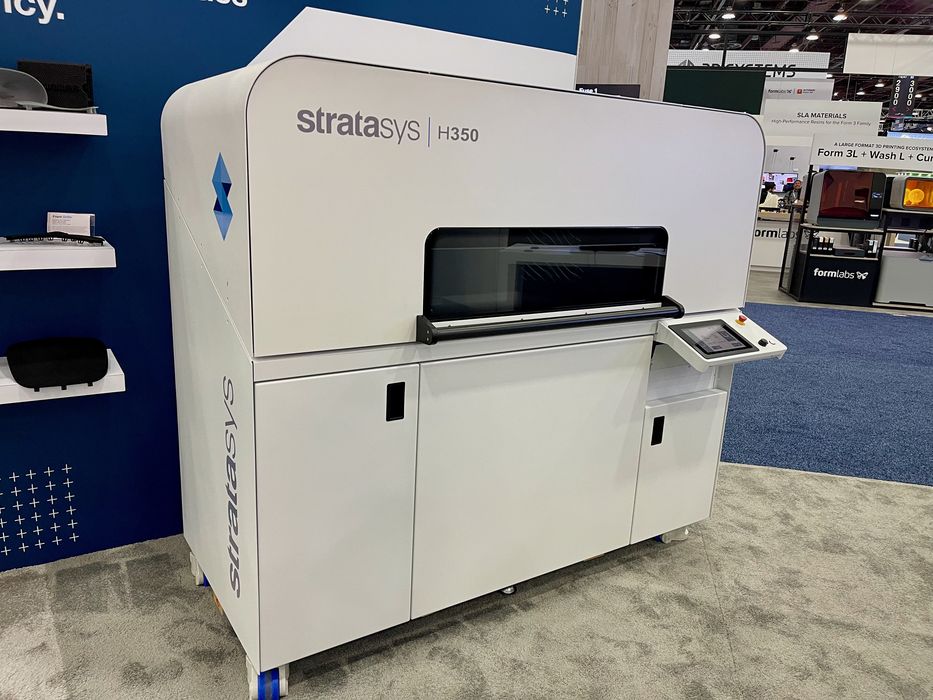
Sometimes the new can be “too new”.
A funny thing happened during a discussion with Stratasys a while back. While talking about the company’s new H350 3D printer, I was told “no one understands it yet.”
This is a bit curious, so I thought about it more deeply.
The H350 is indeed one of Stratasys’ new device, and it uses the brand new SAF 3D printing process: Selective Absorption Fusion.
If you’re not familiar with SAF — and that could be the point of this story — here’s a quick rundown:
- In the build chamber, a layer of polymer powder is laid down flat
- A printhead sweeps across the powder bed, selectively depositing fluid droplets where solid material is required
- This fluid (HAF) is designed to quickly absorb energy and release it as heat
- A second sweep across the partially wet print surface emits infrared radiation
- The HAF-wet portions heat up rapidly to the point where the surrounding polymer powder melts and then solidifies
- The process repeats, layer by layer, until the object is complete
There are some tremendous advantages to SAF, including the ability to scale up to large volumes, extremely rapid printing, precise thermal control, no need for support structure (powder does that for you), and full 3D volume printing capacity.
The cost of operating the system should be relatively inexpensive, as the process is simple and needs only HAF as a consumable. These features combine to create a system that should be able to produce high throughput of 3D printed parts for production purposes.
This all sounds really quite good, so why doesn’t every company buy an H350 and start SAFing parts?
It’s because few really understand it.
SAF is entirely new and at this early stage hardly any potential customers have heard about it. In fact, there are still many operations that haven’t even taken the plunge into pre-SAF 3D printing technologies, let alone SAF.
There are still massive efforts undertaken by many 3D printer providers to persuade manufacturers to make a shift into 3D printing. It’s a long, tedious process, as company management must be convinced it’s a good thing to do. If the results are identical to current approaches, then companies won’t shift: why spend money to get the same thing?
On top of those barriers, the SAF folks come in and try to do that same persuasion with an entirely new process that few have heard of. Manufacturers have critical production processes to look after, and adopting something new that might disturb their throughput in any way is a scary prospect. Management doesn’t like change unless the risks are outweighed by some significant advantage or opportunity.
If manufacturers’ competitors are using SAF, then why even consider it? It’s a kind of chicken and egg scenario, except with 3D printing processes.
SAF and several other notable new 3D printing processes should eventually revolutionize the world of manufacturing. However, the road to get there is going to be rather long and slow going, at least until there is a notable breakthrough by one or more future-looking manufacturers.
Via Stratasys

There is already HP MJF; what’s the difference?